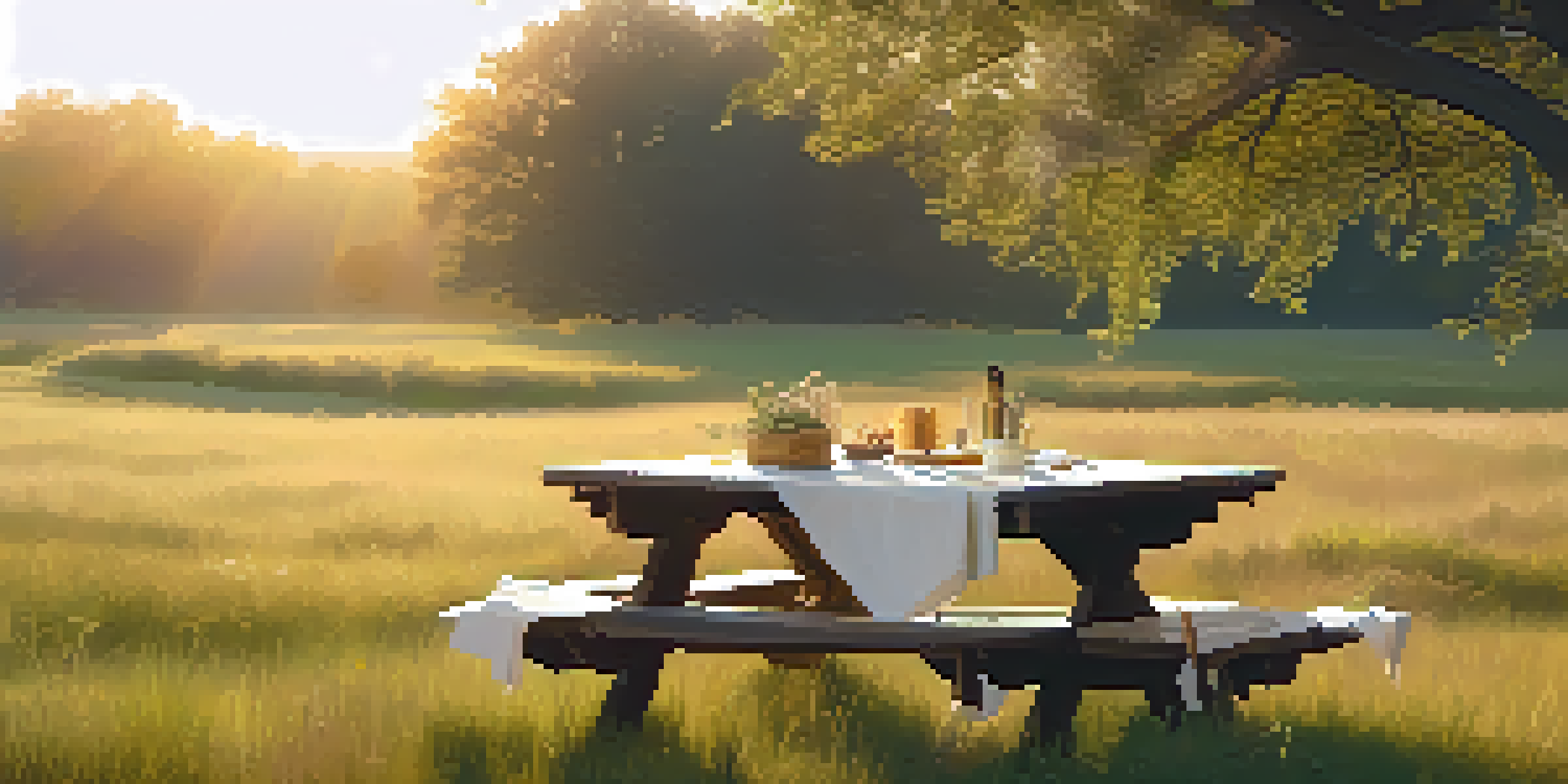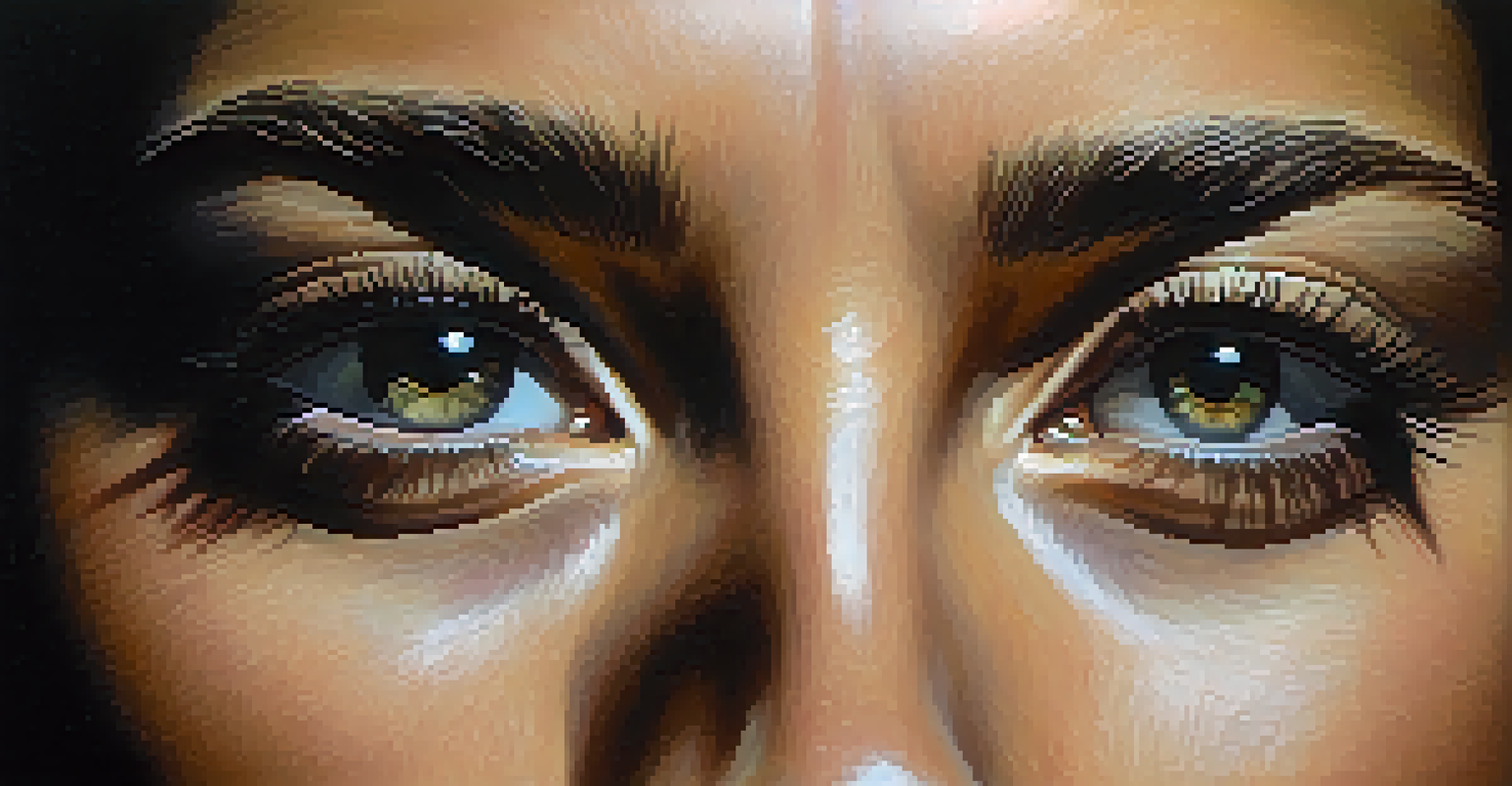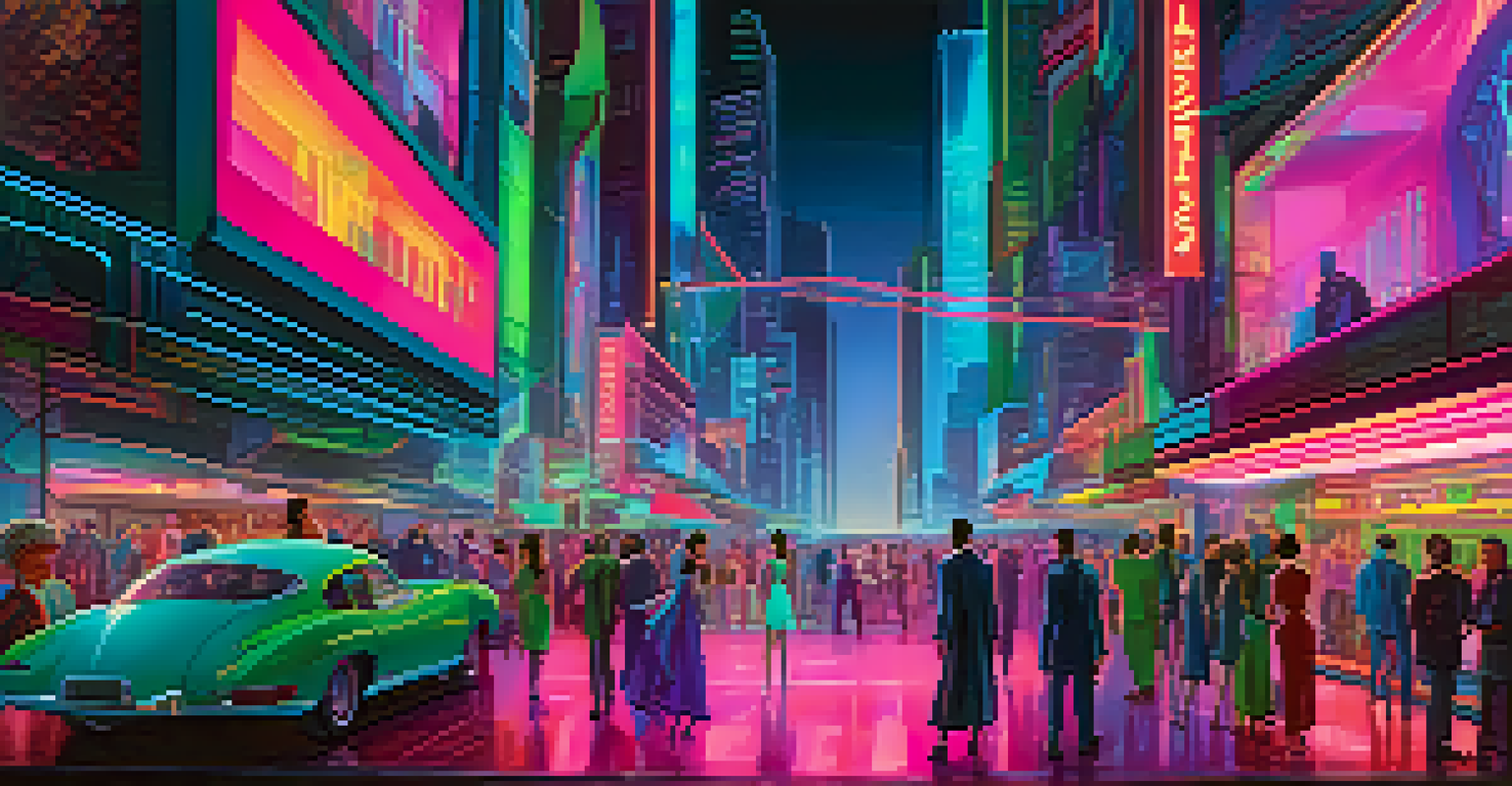Lighting Styles: Crafting Atmosphere in Cinematic Spaces

Understanding the Role of Lighting in Film
Lighting is more than just visibility; it’s a crucial storytelling tool in film. It sets the mood, highlights emotions, and guides the viewer's attention. Just think of a horror movie—dim, flickering lights can create tension, while bright, soft lighting can evoke warmth and comfort in a romantic scene.
Lighting is like the paint on a canvas; it can evoke emotions and set the tone for the entire story.
Every decision about lighting influences how we perceive the narrative. For instance, a well-lit scene can feel open and inviting, while shadows can introduce mystery or foreboding. This dynamic interplay between light and shadow is what captivates audiences and draws them into the story.
In essence, lighting helps create an immersive experience. By manipulating light, filmmakers can craft realities that resonate with viewers, making them feel every twist and turn of the plot as if they were part of it.
Natural vs. Artificial Lighting: Pros and Cons
Natural lighting, like sunlight, brings an authenticity that's hard to replicate. It can create soft, realistic environments that resonate with viewers on a personal level. Think of outdoor scenes bathed in golden hour light, which creates a serene and genuine atmosphere.

On the other hand, artificial lighting offers control and versatility. Filmmakers can manipulate it to achieve specific moods or effects, like using colored gels to create a fantastical world. However, it can sometimes feel less organic than natural light, which can be a double-edged sword.
Lighting Shapes Film Storytelling
Lighting is a crucial tool in film, setting the mood and guiding viewer emotions.
Ultimately, the choice between natural and artificial lighting depends on the story being told. Each has its own set of advantages and can be used creatively to enhance the narrative's emotional impact.
Key Lighting Techniques Every Filmmaker Should Know
There are several fundamental lighting techniques that filmmakers often rely on, such as three-point lighting. This method uses key, fill, and back lights to create depth and dimension in a scene. By balancing these three sources, filmmakers can achieve a polished, professional look.
The light reveals the truth of the scene; it dictates the viewer's emotional response.
Another popular technique is high-key lighting, which produces bright, even illumination. This is often used in comedies and upbeat scenes to convey a sense of happiness and clarity. Conversely, low-key lighting creates strong contrasts and shadows, perfect for thrillers and dramas where suspense is key.
Understanding these techniques allows filmmakers to craft the desired atmosphere effectively. Mastery of lighting styles can transform an ordinary scene into something extraordinary, enhancing storytelling in ways that words alone cannot.
The Emotional Impact of Color in Lighting
Color plays a critical role in how lighting influences emotions. Warm colors like red and orange can evoke feelings of passion, warmth, or even danger, while cooler colors like blue and green often create calm or melancholic atmospheres. Think about how a red-lit room can feel intimate yet tense, compared to a tranquil blue-lit space.
Color temperature can also change the perception of a scene. For instance, daylight balanced lighting feels fresh and vibrant, while tungsten lighting can feel nostalgic or cozy. This manipulation of color not only enhances the aesthetic but also deepens the emotional connection viewers have with the characters and story.
Natural vs. Artificial Lighting
Both natural and artificial lighting have unique advantages that filmmakers can creatively utilize to enhance their narratives.
Filmmakers must carefully consider their color choices to align with the narrative's emotional tone. By integrating color into their lighting design, they can create a richer, more engaging cinematic experience.
Creating Depth with Shadows and Highlights
Shadows and highlights can dramatically affect the visual storytelling of a film. By strategically placing lights, filmmakers create a sense of depth and dimension, making the scene feel more three-dimensional. This is especially important in close-ups, where subtle play of light can reveal emotions in a character’s face.
Shadows, when used effectively, can add intrigue and complexity. For example, a character standing in partial shadow may evoke feelings of uncertainty or hidden motives, drawing viewers deeper into the narrative. Highlights, conversely, can spotlight key elements, guiding the audience's focus.
Balancing shadows and highlights is an art form that enriches the visual storytelling. It allows filmmakers to create layers of meaning that enhance the overall impact of the film.
Lighting Styles for Different Genres
Each film genre has its own unique lighting conventions that help set the tone. For instance, horror films often utilize low-key lighting with stark contrasts to create suspense and fear, while romantic comedies typically favor soft, warm lighting to evoke charm and intimacy. These stylistic choices are integral to the genre's identity.
In action films, dynamic lighting can elevate the excitement, using flashes and rapid changes in intensity to match the pace of the action. Meanwhile, documentaries often rely on natural lighting to maintain authenticity and credibility, allowing the story to shine through without distraction.
Lighting Techniques Enhance Visuals
Mastering key lighting techniques allows filmmakers to create depth, emotion, and genre-specific atmospheres.
Understanding these genre-specific lighting styles helps filmmakers effectively communicate their vision. By adhering to or creatively bending these conventions, they can engage audiences and enhance the overall cinematic experience.
The Future of Lighting in Film and Digital Media
As technology evolves, so do the possibilities for lighting in film. Innovations like LED lights, smart lighting systems, and virtual production techniques are revolutionizing how filmmakers approach lighting design. These advancements allow for greater flexibility and creativity in crafting atmospheric scenes.
Virtual reality (VR) and augmented reality (AR) also offer new opportunities for immersive storytelling. Filmmakers can now manipulate lighting in real-time, creating interactive experiences that respond to viewer choices. This opens up exciting avenues for audience engagement and emotional connection.

Looking ahead, the future of lighting in film and digital media promises more dynamic, personalized experiences. By embracing these technological advancements, filmmakers can continue to push the boundaries of visual storytelling, crafting atmospheres that resonate deeply with audiences.